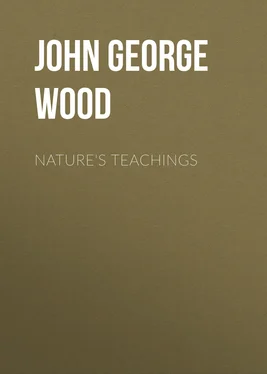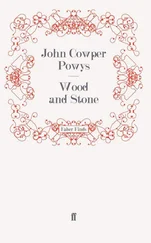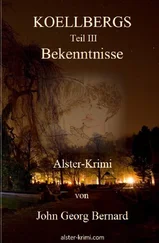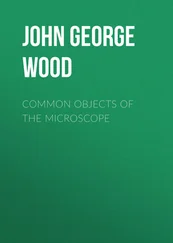John George Wood - Nature's Teachings
Здесь есть возможность читать онлайн «John George Wood - Nature's Teachings» — ознакомительный отрывок электронной книги совершенно бесплатно, а после прочтения отрывка купить полную версию. В некоторых случаях можно слушать аудио, скачать через торрент в формате fb2 и присутствует краткое содержание. Издательство: Иностранный паблик, Жанр: foreign_antique, Природа и животные, foreign_edu, на английском языке. Описание произведения, (предисловие) а так же отзывы посетителей доступны на портале библиотеки ЛибКат.
- Название:Nature's Teachings
- Автор:
- Издательство:Иностранный паблик
- Жанр:
- Год:неизвестен
- ISBN:нет данных
- Рейтинг книги:5 / 5. Голосов: 1
-
Избранное:Добавить в избранное
- Отзывы:
-
Ваша оценка:
- 100
- 1
- 2
- 3
- 4
- 5
Nature's Teachings: краткое содержание, описание и аннотация
Предлагаем к чтению аннотацию, описание, краткое содержание или предисловие (зависит от того, что написал сам автор книги «Nature's Teachings»). Если вы не нашли необходимую информацию о книге — напишите в комментариях, мы постараемся отыскать её.
Nature's Teachings — читать онлайн ознакомительный отрывок
Ниже представлен текст книги, разбитый по страницам. Система сохранения места последней прочитанной страницы, позволяет с удобством читать онлайн бесплатно книгу «Nature's Teachings», без необходимости каждый раз заново искать на чём Вы остановились. Поставьте закладку, и сможете в любой момент перейти на страницу, на которой закончили чтение.
Интервал:
Закладка:
Among some tribes the kris is poisoned by being thrust into a putrefying human body, and allowed to remain there until the grooves are filled with the decaying matter. It is also said that if the kris be similarly plunged into the thick stem that grows just at the base of the pine-apple, the result is nearly the same.
As a rule, however, the Arrow is generally the weapon which is poisoned, and a few examples will be mentioned of each kind of poisoning.
The two most formidable animal poisons are those which are made by the Bosjesmans of Southern Africa. Their bows are but toys, and their arrows only slender reeds. But they arm these apparently insignificant weapons with poison so potent, that even the brave and bellicose Kafir warrior does not like to fight a Bosjesman, though he be protected by his enormous shield.
There are two kinds of animal poison used by the Bosjesmans. The first is made from the secretion of the poison-glands of the cobra, puff-adder, and cerastes. Knowing the sluggish nature of snakes in general, the Bosjesman kills them in a very simple manner. He steals cautiously towards the serpent, boldly sets his foot upon its neck, and cuts off its head. The body makes a dainty feast for him, and the head is soon opened, and the poison-glands removed.
By itself, the poison would not adhere to the point of the weapon, and so it is mixed with the gummy juice of certain euphorbias, until it attains a pitch-like consistency. It is then laid thickly upon the bone point of the arrow, and a little strip of quill is stuck into it like a barb. The object of the quill is, that if a man, or even an animal, be wounded, and the arrow torn away, the quill remains in the wound, retaining sufficient poison to insure death. I have a quiverful of such arrows in my collection.
That arrows so armed should be very terrible weapons is easily to be imagined, but there is another kind of poison which is even more to be dreaded. This is procured from the innocent-looking, but most venomous, Poison-grub. It is called N’gwa by the Bosjesmans, and is the larval state of a small beetle. When the arrow is to be poisoned, the grub is broken in half, and the juices squeezed upon the arrow in small spots.
Both Livingstone and Baines give full and graphic accounts of the horrible effect produced by this dread poison, which, as soon as it mixes with the blood, drives the victim into raging madness. A lion wounded by one of these arrows has been known nearly to tear himself to pieces in his agonies. M. Baines was good enough to present me with the N’gwa grub in its different stages, together with an arrow which has been poisoned with its juices.
The Bosjesmans are themselves so afraid of the weapon, that they always carry the arrows with the points reversed, the poisoned end being thrust into the hollow reed which forms the shaft of the arrow. Not until the arrow is to be discharged does its owner place the tip with its point uncovered.
We now come to the Vegetable Poisons, the two best known of which are the Upas poison of Borneo, and the Wourali of South America. It is rather remarkable that in both these cases the arrows are very small, and are blown through a hollow tube, after the manner of the well-known “Puff-and-dart” toy of the present day.
The Upas poison is simply the juice of the tree, and it does not retain its strength for more than a few hours after it has been placed on the arrow-points. A supply of the same liquid is therefore kept in an air-tight vessel made of bamboo, the opening being closed by a large lump of wax kneaded over it at the mouth. One of these little flasks, taken from a specimen in my collection, is seen on the extreme right of the illustration.
The Wourali poison owes all its power to its vegetable element, though certain animal substances are generally mixed with it. The principal ingredient is the juice of one of the strychnine vines, which is extracted by boiling, and then carefully inspissated until it is about the consistency of treacle. This poison differs from the Upas in the fact that it retains its potency after very many years, if only kept dry. I have a number of arrows poisoned with the Wourali. They were given to me by the late Mr. Waterton, who procured them in 1812, and even in the present year (1875) they are as deadly as when they were first made.
A bundle of these tiny arrows, surmounted by the little wheel which is used to guard the hand from being pricked, is seen next to the Bornean poison-flask.
Beside these little arrows, which are only about ten inches in length, very much larger arrows are used both for war and hunting, and are propelled by the bow, and not with the breath. Many of these arrows are nearly six feet in length. In all, the head is movable fitting quite loosely into a socket, so that when an animal is struck and springs forward, the shaft is shaken off, to be picked up by the hunter, and fitted with another point, while the poisoned head remains in the wound.
Another kind of poison, also of a vegetable origin, is used by the Fan tribe. The arrows are mere little slips of bamboo, and are propelled by a slight crossbow. But the poison is so potent, that even these tiny weapons produce a fatal effect.
Nearly in the centre of the illustration is seen a rather curiously formed syringe, with an extremely long and slender tip. This is a recently invented instrument, used for the purpose of subcutaneous injection— i.e. of injecting any liquid under the skin. It is mostly employed for injecting opium and other drugs of similar qualities, for the purpose of obtaining relief from local pain. The slender spike-like point is hollow, and ends in a sharp tip, formed like the head of a lance. Just below the head there is a little hole, communicating with the interior of the tube.
The mode of operating is simple enough. The syringe is filled with the drug, and the point introduced under the skin at any given spot. Pressure on the piston then forces out the liquid, and causes it to mix with the blood.
Now, both in the animal and vegetable worlds may be found several examples of an apparatus which acts in exactly the same manner.
The first is the poison-fang of the Serpent, a specimen of which is given on the left hand of the illustration. This fang answers in every respect to the syringe above mentioned. The long and slender fang is hollow, and answers to the pipe of the syringe. It communicates at the base with a reservoir of liquid poison, which answers to the body of the syringe, and there is a little hole, or rather slit, just above the point, which allows the poison to escape.
When the serpent makes its stroke, the base of the fang is driven against the reservoir, so that the liquid is urged through the hollow tube, and forced into the wound. Even in large serpents these fangs are very small. I have now before me some fangs of the cobra, puff-adder, rattlesnake, and viper, and it is astonishing how small and slender are these most deadly weapons. The figure in the illustration is much magnified, in order to show the aperture at the base, where communication is made with the interior of the fang. As the exit hole is on the upper curve of the fang, it is not visible in the figure.
Next to the serpent’s fang is a representation of the Bee-sting, the poisonous reservoir being seen at the base, and having attached to it the tiny thread-like gland by which the poison is secreted.
In the centre is seen the tail of a Scorpion, with its hooked sting. The last joint is formed just like the serpent’s fang, being hollow, having a sharp point with a slit near the end, and a poison reservoir in the rounded base. When the scorpion attacks an enemy, it strikes violently with the tail, and the force of the blow drives out the poison just as is done with the serpent’s fang.
Читать дальшеИнтервал:
Закладка:
Похожие книги на «Nature's Teachings»
Представляем Вашему вниманию похожие книги на «Nature's Teachings» списком для выбора. Мы отобрали схожую по названию и смыслу литературу в надежде предоставить читателям больше вариантов отыскать новые, интересные, ещё непрочитанные произведения.
Обсуждение, отзывы о книге «Nature's Teachings» и просто собственные мнения читателей. Оставьте ваши комментарии, напишите, что Вы думаете о произведении, его смысле или главных героях. Укажите что конкретно понравилось, а что нет, и почему Вы так считаете.












